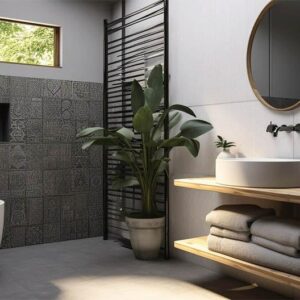Selecting the perfect flooring for your home can be a daunting task, given the multitude of options available.Factors such as durability, maintenance, cost, aesthetics, and comfort play crucial roles in the decision-making process.
This guide explores the various types of flooring, from hardwood to carpet, weighing the pros and cons of each.It provides tailored recommendations for specific rooms to help you make the most informed choice.
Dive in to discover the best flooring solutions for your space!
What are the factors to consider when choosing the right flooring ?
Choosing the right floor involves a multifaceted assessment of several key factors that can significantly impact both the functionality and aesthetic appeal of your living space.
Durability is crucial as it determines how well the flooring can withstand wear and tear from foot traffic, moisture, and pets, while maintenance considers the long-term care required to keep the flooring looking its best.
Additionally, the cost of different flooring materials, such as ceramic tile, laminate, or solid hardwood, should be weighed against the aesthetics and comfort they provide in each room of your home.
Durability
Durability is a crucial factor when selecting flooring, as it determines how well the material can withstand everyday wear and tear, moisture exposure, and the impact of pets and heavy furniture in your home, affecting not only aesthetic appeal but also long-term investment value.
When considering various flooring options, it’s essential to compare their durability, longevity, and resistance to environmental factors. Here’s a brief overview of how different materials stack up:
- Ceramic tile – Known for its hard surface, it can last 50 years or more. It is resistant to moisture, making it ideal for bathrooms and kitchens;
- Porcelain tile – A step above ceramic, this material offers greater density and moisture resistance, with a lifespan of 50 years and suitable for high-traffic areas;
- Vinyl – With a lifespan of 10 to 20 years, vinyl is highly resistant to moisture and scratches, making it an excellent choice for homes with pets;
- Laminate – This material typically lasts 15 to 25 years, offering decent resistance to moisture but is less durable than tile options;
- Solid hardwood – While stunning and long-lasting (up to 100 years), hardwood requires maintenance and can be sensitive to humidity;
- Engineered wood – With a lifespan of 20 to 30 years, this option offers moisture resistance and stability compared to solid wood, making it versatile for different settings.
By understanding these characteristics, homeowners can make informed decisions that align with the use and aesthetic of each room.
Maintenance

Choosing the right flooring also involves evaluating maintenance requirements. Each material presents a unique set of challenges and advantages that significantly impact long-term care strategies:
- Ceramic tile – This durable option requires minimal maintenance, as it’s resistant to stains and moisture. Grout lines can accumulate dirt and may need regular scrubbing;
- Vinyl – Noted for its affordability and ease of cleaning, vinyl floors can be wiped down regularly. Nevertheless, they may suffer from scratches over time, necessitating careful handling of heavy furniture;
- Laminate – While laminate is easy to maintain, it can be vulnerable to water damage if not properly sealed. Regular sweeping and occasional mopping can help preserve its appearance;
- Hardwood – This beautiful flooring type can enhance property value, yet it requires significant upkeep, such as refinishing and careful cleaning to protect the wood from scratching and moisture.
Understanding these traits allows homeowners to better prepare for the long-term commitment of their flooring choice.
Cost
Understanding the cost of flooring options is essential for any renovation project, as it helps you establish a budget that aligns with your financial capabilities while achieving your desired aesthetic and functional outcomes.
This knowledge enables homeowners and contractors alike to weigh the various benefits and drawbacks associated with each material, ensuring that the choices made will satisfy both immediate needs and long-term preferences.
By diving into the specifics of different materials, one can appreciate how the right flooring can enhance a space while also contributing to overall home value.
When considering flooring types, several factors come into play, influencing their overall cost:
- Material costs – The price of the flooring material itself varies significantly. For example, ceramic tile can be affordable, while solid hardwood is generally on the higher end of the spectrum;
- Installation costs – Professional installation can add to the overall expense, particularly with harder materials like ceramic tile which require more specialized skills and tools;
- Lifespan – The longevity of the flooring can impact its cost-effectiveness; for instance, while laminate may be cheaper upfront, solid hardwood offers a longer lifespan and can be refinished multiple times;
- Overall value – The perceived value and return on investment are crucial – engineered wood might sit between laminate and solid hardwood in terms of both price and durability.
Ultimately, assessing these elements will help guide the selection of a flooring type that meets both aesthetic desires and practical financial considerations.
Aesthetics
Aesthetics play a vital role in choosing the right flooring, as the right style can enhance the overall decor and ambiance of your home, creating a warm and inviting atmosphere in spaces like the living room, kitchen, and dining room.
When considering flooring options, homeowners often delve into various materials that not only elevate the aesthetic appeal but also contribute to functional aspects.
Among the most popular choices are ceramic tile, which offers durability along with design versatility, and hardwood, celebrated for its timeless elegance and natural warmth.
Vinyl, on the other hand, has gained traction due to its affordability and wide range of stylish options, making it a favorite for those seeking practicality without sacrificing style.
- Ceramic Tile – Ideal for high-moisture areas, it complements both modern and traditional interiors with intricate designs;
- Hardwood – Perfect for creating a rustic charm, it is available in various finishes and colors to suit personal tastes;
- Vinyl – Offers a budget-friendly solution that mimics the look of other materials, fitting seamlessly into eclectic or contemporary settings.
Incorporating these flooring styles while considering the latest trends can significantly impact the visual and tactile experience of each room, making it essential for individuals to explore all available options.
Comfort
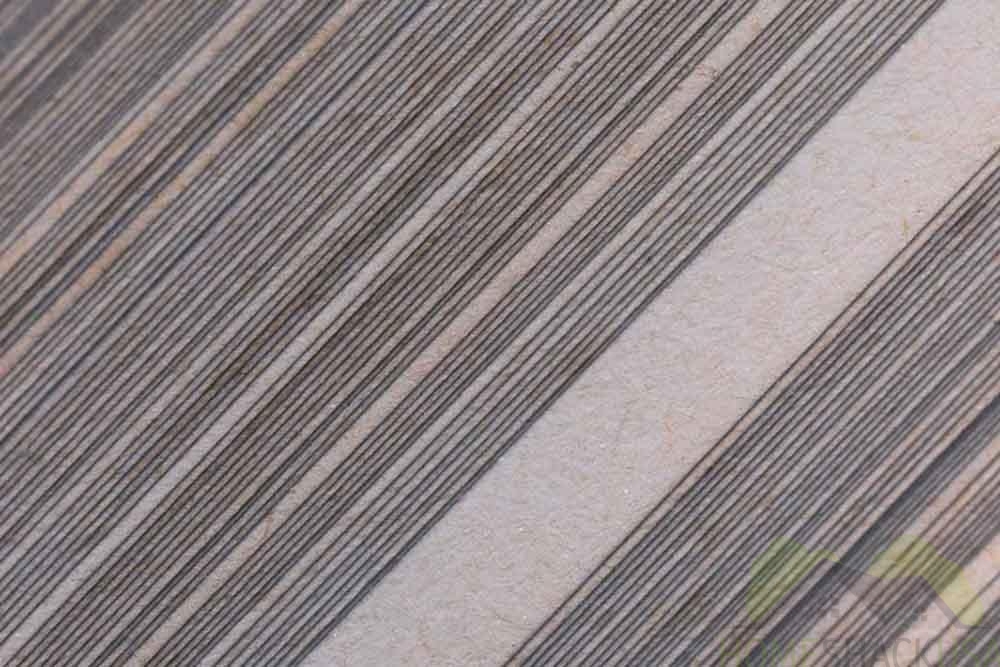
Comfort is a significant factor when selecting flooring, as it impacts the overall feel and usability of different spaces in your home, particularly in areas where you spend a lot of time, such as the living room and bedroom.
Choosing the right flooring material can enhance your home environment remarkably, impacting everything from your daily activities to the overall atmosphere. Various options offer distinct qualities that cater to different needs and preferences.
For instance, vinyl flooring is known for its softness and is great for playrooms or kitchens where children often sit or crawl. In contrast, carpet provides a plush surface that adds warmth and can keep a room cozy during colder months.
- Hardwood flooring gives off a more elegant feel but can be less forgiving underfoot;
- Each material not only differs in comfort but also offers unique insulation properties;
- Choosing the right type for rooms like bedrooms versus basements can significantly boost comfort levels.
Ultimately, understanding how these materials differ in terms of softness, warmth, and insulation will help in selecting the right flooring for various spaces.
What are the different types of flooring?
In terms of flooring, there is a wide array of types available on the market, each offering unique features and benefits that cater to different preferences, budgets, and functional requirements within the home.
Popular choices include hardwood, which provides classic elegance, laminate that mimics wood aesthetics at a more affordable price, vinyl which is known for its water resistance, tile for its durability, and carpet for added warmth and comfort in bedrooms and family rooms.
Understanding these options allows homeowners to make informed decisions based on their specific needs.
Hardwood
Hardwood flooring, encompassing both solid hardwood and engineered wood, is revered for its timeless beauty, durability, and ability to elevate the aesthetic of any home setting.
The inherent qualities of hardwood flooring make it a sought-after choice for many homeowners looking to enhance their living spaces.
Notably, the durability of solid hardwood stands out, providing resistance against wear and tear, while engineered wood offers similar advantages with enhanced stability, making it less prone to warping in fluctuating humidity.
Maintenance is generally straightforward for both types, involving regular cleaning and occasional refinishing, which can help preserve their luster for years.
Visually, hardwood flooring comes in a stunning variety of grains and colors, allowing for customization that suits any room.
- Solid hardwood – Ideal for living rooms and bedrooms;
- Engineered wood – Perfect for basements and areas with high moisture.
This versatility and charm truly make hardwood a versatile flooring solution.
Laminate
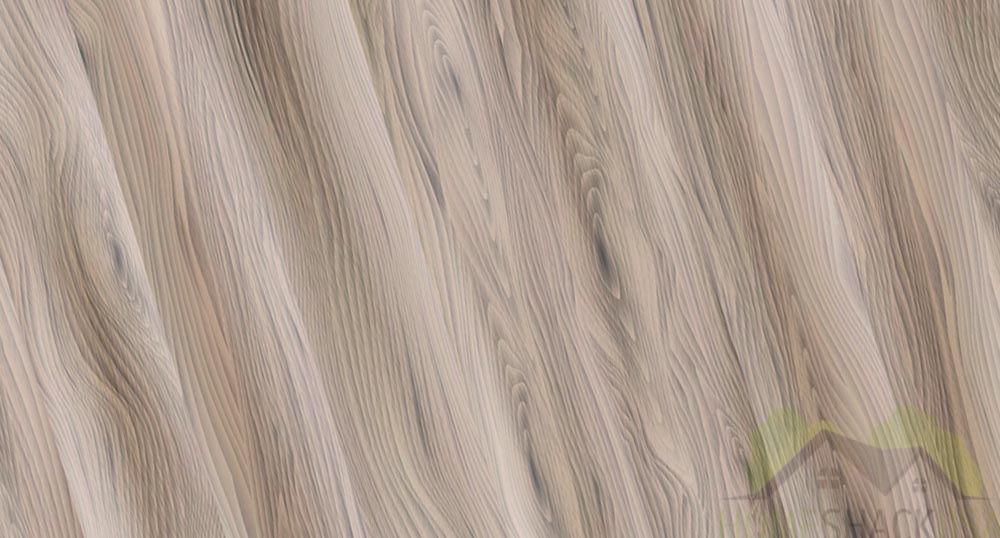
Laminate flooring has gained popularity due to its affordability and ability to replicate the look of natural materials like wood or stone without the associated high costs.
Homeowners often choose laminate flooring not just for its cost-effectiveness, but also for its remarkable aesthetic versatility that can seamlessly match various interior design styles.
With a wide array of colors, textures, and finishes available, it suits different tastes—from rustic charm to sleek modernity. This type of flooring is highly durable, able to withstand heavy foot traffic and daily wear without losing its charm.
It is especially suitable for environments such as family rooms and dining areas, where durability and style are both crucial.
The ease of maintenance further enhances its appeal, making it a smart investment for any homeowner looking to blend beauty with practicality.
Vinyl
Vinyl flooring is favored for its exceptional moisture resistance and comfort, making it a practical choice for high-traffic areas in the home, such as kitchens and bathrooms.
This flooring option not only stands up to spills and splashes but also provides an inviting surface that feels warm and cushioned underfoot, enhancing overall comfort during daily activities.
One of the most notable advantages is its ease of maintenance – a simple sweep or mop is usually enough to keep it looking fresh and clean.
This versatile material is available in a wide range of designs, colors, and textures, allowing homeowners to express their style throughout various rooms, from cozy living spaces to bustling mudrooms.
Its durability ensures that it can withstand the rigors of family life, making it a long-lasting investment for any household.
Tile
Tile flooring, including ceramic and porcelain options, offers remarkable durability and a myriad of aesthetic choices, making it ideal for both functional and decorative purposes in diverse home environments.
One of the standout features of tile flooring is its resilience, capable of withstanding heavy foot traffic without showing signs of wear. This makes it particularly advantageous for busy households.
Its water-resistant properties ensure that spills and moisture are less likely to cause damage, which is vital in areas like kitchens and bathrooms. The variety of designs available, from sleek modern looks to intricate patterns, allows homeowners to express their personal style easily.
Tile flooring is easy to maintain and clean, providing long-term savings on upkeep. Its versatility means it can seamlessly fit into any room, enhancing both functionality and aesthetic appeal.
- Durability – Survives heavy use;
- Water resistance – Ideal for moisture-prone areas;
- Design flexibility – Options to suit every taste.
Carpet
Carpet flooring is synonymous with warmth and comfort, making it a popular choice for areas in the home where relaxation and coziness are paramount, such as living rooms and bedrooms.
This choice not only enriches the aesthetic appeal but also ensures a soft, inviting surface that can cradle your feet after a long day.
The benefits of carpet extend beyond its tactile qualities, as it significantly enhances a home’s overall ambiance by absorbing sound, which can create a more peaceful environment.
- Comfort – Ideal for lounging and family gatherings;
- Warmth – Maintains ambient temperature during chilly seasons;
- Sound absorption – Reduces noise levels, making spaces quieter;
- Design options – Available in various colors and patterns to suit personal style.
Suitable areas for carpet installation include not only bedrooms and living rooms but also home offices and playrooms, where its cushioning properties are beneficial.
Regular maintenance, such as vacuuming and occasional deep cleaning, will ensure that the flooring remains fresh and vibrant, ultimately extending its life and beauty.
What are the pros and cons of each type of flooring?
Understanding the pros and cons of each type of flooring is essential for homeowners to make informed decisions that align with their lifestyle, budget, and room-specific needs.
Each flooring option, including hardwood, laminate, vinyl, tile, and carpet, presents unique advantages and disadvantages characterized by factors like durability, maintenance requirements, cost, and aesthetics.
By evaluating these characteristics, you can select the flooring best suited for different spaces in your home.
Hardwood
The primary advantages of hardwood flooring include its exceptional durability, timeless aesthetics, and potential for refinishing, while the downsides encompass its higher cost and susceptibility to scratches and moisture damage.
When considering hardwood flooring, one must also reflect on its ability to enhance the beauty of any space, making it a sought-after choice among homeowners.
Its natural warmth creates an inviting atmosphere, while various wood species and finishes allow for personalized design options.
The maintenance can be demanding as it requires regular cleaning and occasional refinishing to maintain its luster. The installation process can also be labor-intensive, contributing to the overall expense.
- Ideal Applications – Living rooms, dining areas, and bedrooms;
- Potential Limitations – Not recommended for basements and bathrooms due to moisture concerns.
Ultimately, weighing these factors is crucial in deciding if hardwood flooring is the right fit for one’s home.
Laminate
Laminate flooring offers pros such as affordability, ease of maintenance, and a wide range of aesthetic options; however, it lacks the durability and refinishing potential of hardwood flooring.
When considering laminate flooring, homeowners often appreciate its cost-effectiveness, making it an attractive choice for budget-conscious renovations.
With advancements in technology, the variety of designs now mimics the appearance of natural wood or stone quite convincingly, catering to diverse tastes.
It’s essential to note that while laminate is resistant to stains and fading, its longevity can be compromised in high-traffic areas, where heavy furniture and pets may cause wear and tear faster than anticipated.
Thus, evaluating the intended application and lifestyle is paramount before settling on this flooring option.
Pros:
- Affordability;
- Variety of designs;
- Easy maintenance.
Cons:
- Less durable than hardwood;
- Cannot be refinished;
- May not feel as warm underfoot.
Vinyl
Vinyl flooring boasts advantages like moisture resistance, comfort, and ease of maintenance, but it may not provide the same level of luxury or long-term durability as hardwood or tile options.
When considering flooring for a home, one must weigh various factors, and vinyl flooring certainly has its strengths, making it a popular choice in certain situations.
Its remarkable moisture resistance allows it to withstand spills and humidity, making it ideal for areas like kitchens and bathrooms.
The comfortable underfoot feeling is another plus, providing a softer surface compared to tile or hardwood.
- Maintenance – Vinyl flooring is relatively low-maintenance, requiring only regular sweeping and occasional mopping;
- Aesthetic options – It comes in a wide range of styles, colors, and patterns, which enables homeowners to achieve various looks without the high cost of premium materials.
Despite these benefits, it’s essential to consider its limitations in high-traffic areas where wear and tear might occur more rapidly than with more durable choices.
In the end, the decision will depend on the specific needs of each space.
Tile
Tile flooring offers notable advantages, including remarkable durability and extensive design options, but it can be cold and hard underfoot, and installation may require a higher initial investment.
When considering tile flooring for a space, it’s essential to weigh its numerous benefits against potential drawbacks.
The durability of tiles makes them an excellent choice for high-traffic areas like kitchens and bathrooms, where they can withstand both foot traffic and moisture.
The vast design flexibility allows homeowners to choose from various colors, textures, and patterns, enabling personalization to match any decor.
One must also consider the maintenance needs, as grout lines can accumulate grime without proper care.
Another downside is the comfort level – while aesthetically pleasing, the hard surface may not be ideal for areas where residents prioritize warmth and softness underfoot.
Thus, careful thought should be given to the specific application of tile flooring in any home.
Carpet
Carpet flooring excels in providing comfort and warmth, making it ideal for cozy spaces, but it also requires regular cleaning and maintenance and may not be suitable for areas prone to moisture.
Homeowners often appreciate how carpet flooring adds a touch of softness underfoot, creating inviting environments for living rooms and bedrooms where one might spend quality time.
Its sound-absorbing qualities help reduce noise levels, enhancing the overall serenity of a home.
When considering carpet flooring, it is essential to weigh in the potential drawbacks, such as the challenges faced with allergens trapped in fibers and the need for professional cleaning to maintain its pristine appearance.
Choosing the right type is crucial – some carpets hold up better than others in high-traffic areas, while others offer a luxurious feel but may require more care, potentially influencing the decision on whether to use it primarily for aesthetic appeal or functional purposes.
Which type of flooring is best for different rooms?
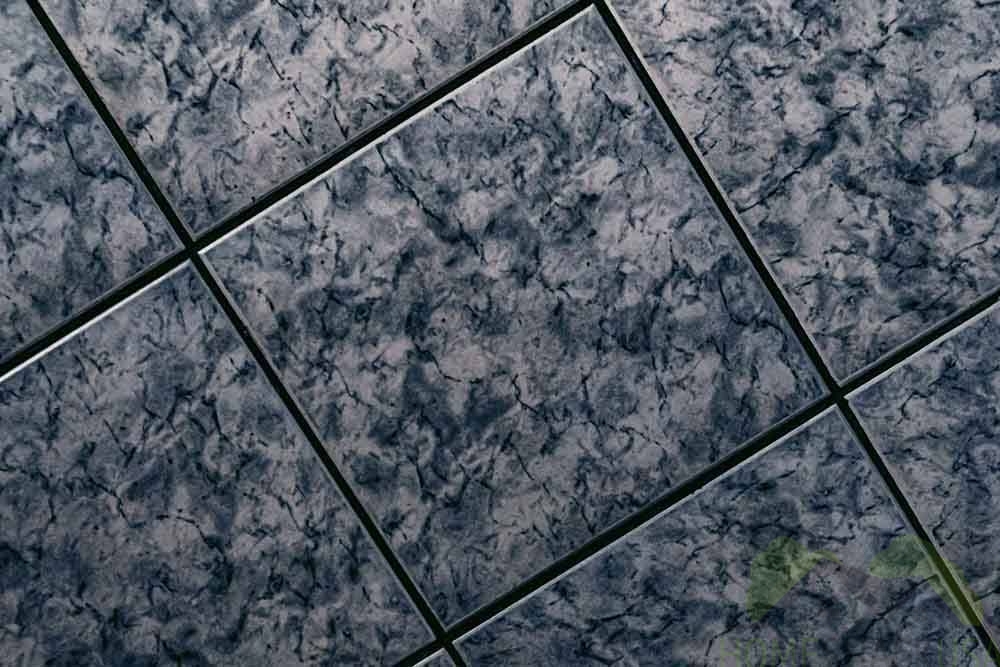
Selecting the best type of flooring for different rooms in your home is a crucial decision that affects both functionality and aesthetics.
Each space has unique requirements influenced by factors like moisture levels, foot traffic, and design preferences.
For instance, kitchens benefit from durable, moisture-resistant options like tile or vinyl, while living rooms may favor classic hardwood for its beauty and warmth.
Understanding these distinctions can guide homeowners in choosing the appropriate flooring for each room.
Kitchen
In the kitchen, flooring options should prioritize durability and moisture resistance, with materials like ceramic tile and vinyl emerging as top contenders for their practicality and style.
When selecting the right flooring, one must consider not only aesthetic appeal but also the functionality that fits a busy environment.
Kitchens often experience high foot traffic, spills, and splashes, making it essential to choose materials that can withstand these challenges.
- Ceramic tile offers an incredibly hard surface that resists scratching and staining, making it an ideal choice for maintaining a pristine appearance over time. It comes in various styles and colors, allowing for personalized design;
- On the other hand, vinyl flooring provides a softer feel underfoot and is renowned for its ease of cleaning and maintenance.With contemporary designs that can mimic wood or stone, it also offers versatility, fitting seamlessly into different kitchen themes.
When deciding between the two, consider factors such as installation costs, comfort, and potential for moisture exposure to ensure the best fit for any culinary haven.
Living Room
For the living room, aesthetics and comfort are paramount, with hardwood and laminate flooring serving as popular choices that enhance the overall ambiance of the space.
When selecting the ideal flooring, it’s important to consider not only visual appeal but also how these options contribute to a cozy and inviting atmosphere.
Both choices offer unique benefits that can cater to diverse tastes and lifestyles, making them suitable for any living area.
- Hardwood flooring is revered for its timeless beauty and durability, bringing warmth and elegance that can elevate the interior design;
- On the other hand, laminate flooring provides a budget-friendly alternative that mimics the look of natural wood while being easier to maintain, making it an excellent option for busy households.
Ultimately, weighing the aesthetic attributes alongside comfort will help in making an informed decision, ensuring the perfect foundation for memorable family gatherings and relaxation.
Bedroom
In bedrooms, comfort and warmth are essential factors, making carpet and hardwood flooring ideal choices that create a cozy and inviting atmosphere.
When selecting the best flooring for a bedroom, it’s important to consider how each option contributes to a serene and welcoming space.
Carpet offers a soft touch underfoot, providing a plush surface that enhances the feeling of warmth, which can be particularly delightful during colder seasons.
It comes in various colors and textures, allowing for versatile aesthetic options that can complement any decor style.
On the other hand, hardwood flooring brings unique beauty and elegance to a bedroom. Not only does it convey a classic look, but it is also durable and can last for decades with proper care.
When thinking about maintenance, while carpets may require regular cleaning to keep them fresh, hardwoods typically need occasional refinishing to maintain their luster.
Therefore, the choice between these two flooring types often balances personal preference, desired maintenance levels, and the overall design atmosphere they aim to achieve.
Advantages of carpet:
- Soft texture for comfort;
- Good insulation;
- Wide variety of colors and styles.
Advantages of Hardwood:
- Timeless appeal;
- Long-lasting durability;
- Easier to clean.
Bathroom
In bathrooms, moisture resistance is critical, which makes ceramic tile and vinyl flooring the best choices for ensuring durability and easy maintenance in a high-moisture environment.
Choosing the right flooring can significantly impact not just the aesthetic of the space but also its functionality. With both materials, homeowners will discover a range of styles and colors, allowing for personalization in design.
- Ceramic tile – known for its strength, ceramic is impervious to water, making it an ideal option for wet areas.
- Vinyl – this option is not only water-resistant but also softer underfoot, which can enhance comfort while walking in the bathroom.
Evaluating these factors will help in making an informed decision that aligns with both style and practicality, ensuring that the bathroom remains a serene environment despite constant moisture exposure.
Basement
Basements often require flooring solutions that can handle moisture and provide comfort, with vinyl and laminate flooring emerging as practical and stylish options for these underground spaces.
In considering the right flooring, one must focus on attributes such as durability, ease of maintenance, and resistance to the damp conditions typical of such areas.
Vinyl flooring is particularly celebrated for its remarkable moisture resistance, which makes it an ideal choice for climates prone to high humidity and for spaces that may experience water infiltration.
This type of flooring not only stands up to moisture but is also soft underfoot, adding an element of comfort that is often desired in living spaces.
On the other hand, laminate flooring offers a wide variety of designs and colors while being highly resistant to scratches and stains.
Both options present a great blend of style and functionality, making them suitable choices depending on the specific needs of the homeowner.
Here’s a quick comparison:
- Vinyl flooring – Water-resistant, soft feel, available in various styles;
- Laminate flooring – Durable, scratch-resistant, wide range of aesthetic choices.
Ultimately, selecting the right flooring is about striking a balance between aesthetics and practical performance in moisture-prone environments.
Frequently asked questions
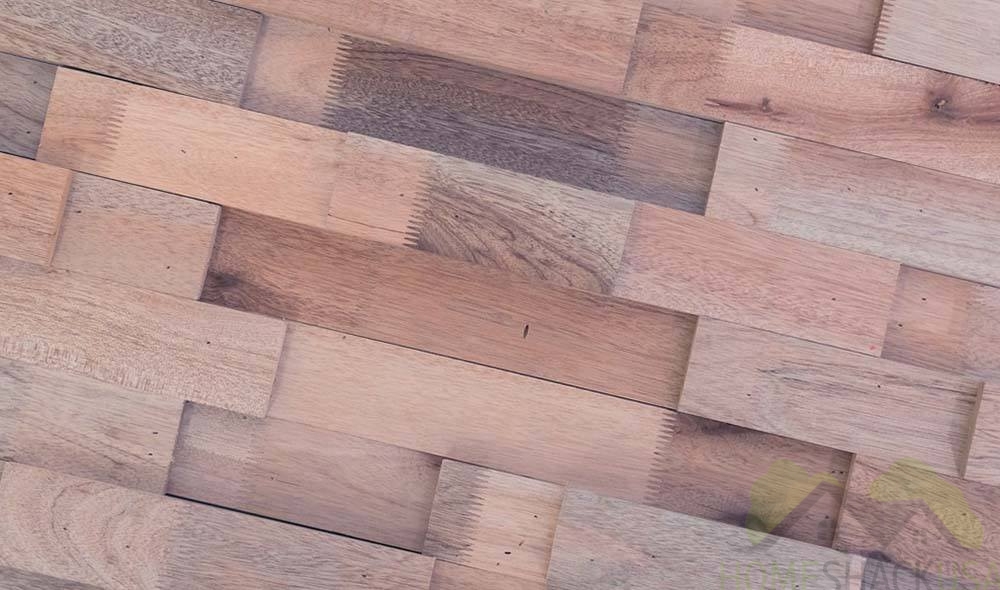
What are the different types of flooring options available?
There are various flooring options available such as hardwood, laminate, vinyl, tile, carpet, and more. Each type has its own unique characteristics and benefits, so it’s important to consider your specific needs and preferences before making a decision.
What are the main differences between hardwood and laminate flooring?
Hardwood flooring is made from real wood while laminate flooring is a synthetic product that mimics the look of wood. Hardwood is more durable and can be refinished, but laminate is more affordable and easier to maintain.
Which type of flooring is best for high-traffic areas?
For areas with heavy foot traffic, such as entryways or hallways, hardwood or tile flooring is ideal. They are both durable and can withstand frequent use without showing signs of wear and tear.
Is it possible to have both style and durability with flooring?
Absolutely! There are several flooring options that offer both style and durability, such as hardwood, luxury vinyl, and tile. These options come in a variety of designs and patterns to suit any aesthetic while also being able to withstand daily wear and tear.
What are the benefits of carpet flooring?
Carpet flooring provides warmth, comfort, and noise reduction in a room. It also offers a wide range of design options and can be more affordable compared to other flooring types.
How do I decide which type of flooring is best for my home?
Consider factors such as your budget, aesthetic preferences, the function of the room, and your lifestyle when choosing the right flooring for your home. It’s also helpful to consult with a flooring professional for expert advice and recommendations.
If the article helped you, then you can read more about the other elements of the room in our site HomeShackUsa.com


